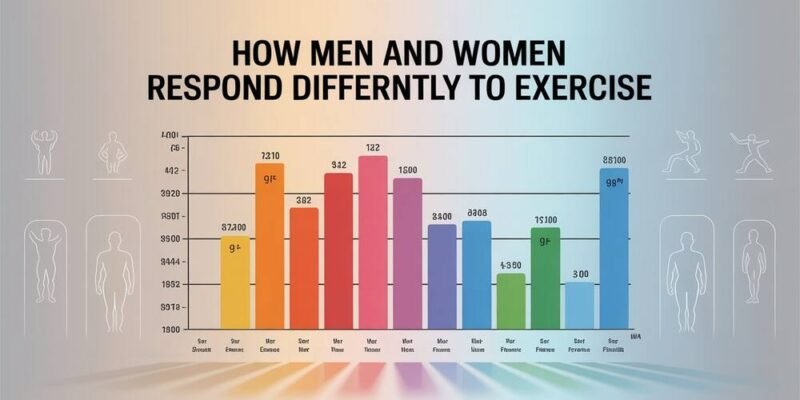Walk into any gym, and you’ll notice some interesting patterns. Men tend to gravitate toward the weight room, while women often head straight for the cardio machines.
However, what’s fascinating is that the fundamental differences in how men and women respond to exercise extend far deeper than these surface-level preferences. Understanding these differences can revolutionize how we approach fitness and unlock better results for everyone. Fortunately, we had the opportunity to learn these aspects directly from Mena of FIT4IT, a personal training expert in Dubai with years of experience in the industry. Here is everything you need to know about how men and women respond to exercise.
The Hormonal Foundation
The most significant factor driving different exercise responses is hormones. Men naturally produce 10-20 times more testosterone than women, which is why they typically build muscle mass more quickly and recover faster between intense sessions. This doesn’t mean women can’t build impressive strength; it just means the timeline and approach might need adjustment.
Women’s hormonal landscape is more complex, with estrogen and progesterone fluctuating throughout monthly cycles. These hormonal shifts affect everything from energy levels to pain tolerance to how the body stores and burns fat. During the first half of the menstrual cycle, when estrogen levels are rising, women often experience improved strength gains and can handle higher training volumes. The second half may require more recovery-focused activities.
Muscle Fiber Composition Makes a Difference
Research indicates that women tend to have a higher percentage of Type I muscle fibers, which are the slow-twitch fibers that excel in endurance activities. Men typically have more Type II fast-twitch fibers, which generate power and strength but fatigue more quickly. This explains why women often outperform men in ultra-endurance events, but men dominate in explosive power sports.
These fiber differences also affect training responses. Women can often handle higher training volumes and recover more quickly from moderate-intensity exercise. They also tend to maintain their form better during fatigue, which reduces the risk of injury during longer training sessions.
Fat Burning vs. Carb Burning
Women’s bodies are generally more efficient at burning fat for fuel, especially during moderate-intensity exercise. This is partly due to higher estrogen levels, which enhance fat oxidation. Men, on the other hand, rely more heavily on carbohydrates for energy during exercise, which can lead to faster glycogen depletion but also support higher-intensity performance.
This metabolic difference has practical implications. Women may find that they can exercise longer at moderate intensities without feeling depleted. At the same time, men may need more frequent refueling during extended sessions but can push harder during short, intense bursts.
Recovery Patterns Vary Significantly
Men typically experience more muscle damage from intense exercise, which means they require more extended recovery periods between heavy strength training sessions. However, they also tend to recover more quickly from cardiovascular exercise due to higher cardiac output and oxygen-carrying capacity.
Women often recover more quickly from strength training because they experience less muscle damage relative to their strength levels. This means they can train more frequently with moderate loads. However, they may require more recovery time during specific phases of their menstrual cycle when hormone levels are less favorable for adaptation.
The Injury Risk Landscape
Women face a significantly higher risk of specific injuries, particularly ACL tears and stress fractures. This increased risk stems from several factors, including wider pelvises that affect knee alignment, hormonal influences on ligament laxity, and often less muscle mass to protect the joints. The good news is that targeted strength training can dramatically reduce these risks.
Men are more prone to acute injuries from lifting too much weight or pushing through pain. Their higher testosterone levels can sometimes lead to overconfidence and poor decision-making during training, resulting in muscle strains and joint injuries.
Adaptation Timelines Tell Different Stories
When starting a new exercise program, men often experience rapid initial strength gains due to their higher testosterone levels and greater potential for muscle mass. These quick wins can be motivating but might also lead to overtraining if not appropriately managed.
Women typically experience more gradual but consistent improvements in strength and endurance. While the initial gains may seem slower, women often develop more effective movement patterns and maintain their fitness gains more consistently over time. The key is understanding that slower doesn’t mean inferior – it usually means more sustainable.
Practical Applications for Better Results
Understanding these differences doesn’t mean men and women need completely different exercise programs, but it does suggest some modifications can optimize results. Women may benefit from higher training frequencies with moderate loads, while men may achieve better results from lower-frequency, higher-intensity approaches.
Both genders benefit from strength training, but women might need extra emphasis on explosive movements to develop power. Men might benefit from more endurance-focused training to balance their natural power advantage.
Personal training becomes especially valuable here, as a skilled trainer can adjust programs based on individual responses rather than making assumptions based solely on gender. After all, individual variation often matters more than gender differences.
The bottom line is that both men and women are capable of achieving incredible fitness feats. The path to get there might look different, but the destination of improved health, strength, and vitality remains equally attainable for everyone willing to put in the work.
Do Read: Dark Labs Testosterone Boosters: Strength and Energy Redefined













